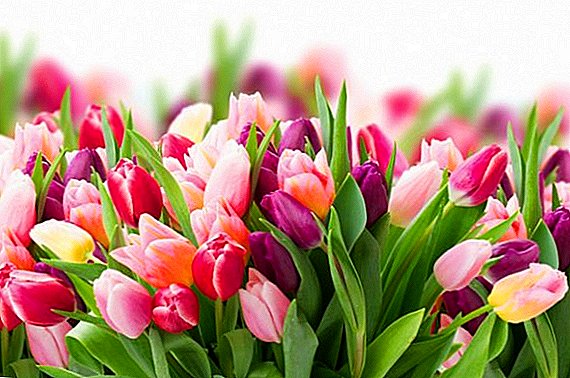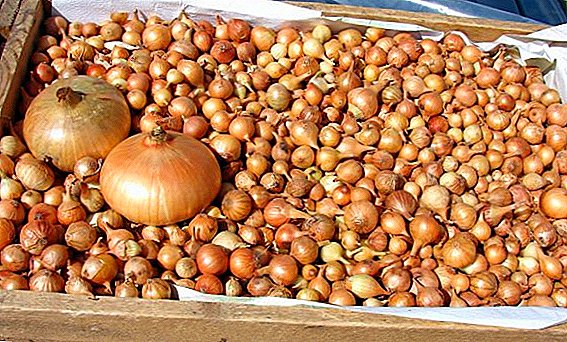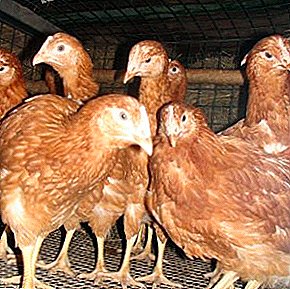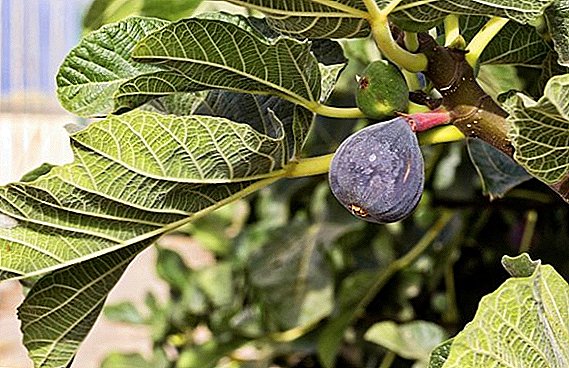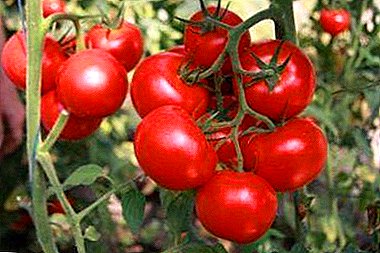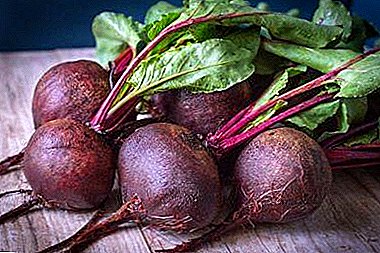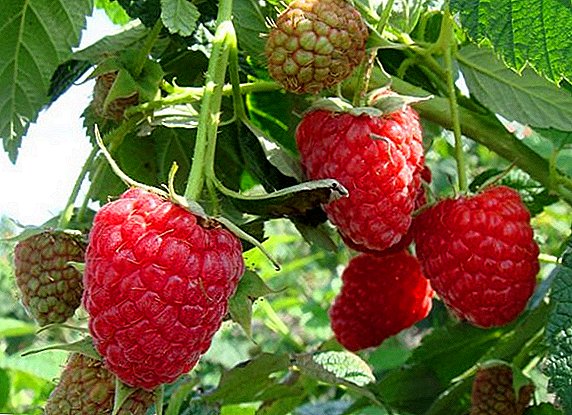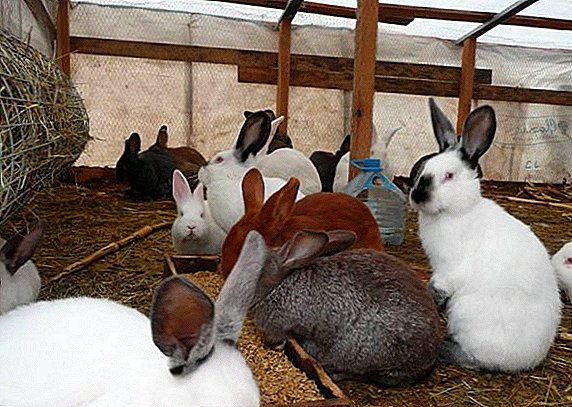 Breeding rabbits at your own dacha is a great way not only to provide your family with additional monetary profit, but also to enrich the diet with quality meat. However, like other farming activities, rabbit breeding implies the precise implementation of certain recommendations and rules.
Breeding rabbits at your own dacha is a great way not only to provide your family with additional monetary profit, but also to enrich the diet with quality meat. However, like other farming activities, rabbit breeding implies the precise implementation of certain recommendations and rules.
Pros and cons of breeding rabbits in the country
As obvious advantages of home breeding rabbits, the following can be noted:
- the possibility of obtaining a diverse income from the sale of grown animals, their wool and meat;
- high and stable demand for products;
- rapid growth and high fecundity of individuals;
- qualitative extermination of the rabbit and their numerous offspring of weeds and other unnecessary greenery in the summer cottage.

Disadvantages:
- susceptibility of rabbits to various infectious diseases;
- Significant cash costs for the purchase of individuals, special feed, vaccine and other mandatory devices for proper maintenance;
- high mortality among newborns of baby rabbits;
- possible costs of veterinary care.
Did you know? The Angora breed of rabbits was bred in Turkey - its name comes from the city of Ankara, which in the Middle Ages was called Angora.
Where to start
The first step is to determine the breed of rabbits, and decide the purpose for which breeding will be carried out. Animals are divided into 3 groups:
- downy (skinny) - are grown up only for receiving down;
- meat - great weight gain and valued for tasty meat;
- meat-hide (universal).

Choosing the right breed
After choosing the most profitable direction, it is necessary to consider the most popular, and, according to experienced breeders, highly productive breeds.
For meat
The highest growth rate of rabbits and meat quality can be boasted by the following varieties:
- White New Zealand rabbit. The animal has a white wool color, small erect ears and a slightly elongated body. Its length is 47 cm for a male, and 49 cm for a female. Adults weigh about 5 kg. "New Zealanders" fairly quickly adapt to our climate and to the cells provided.
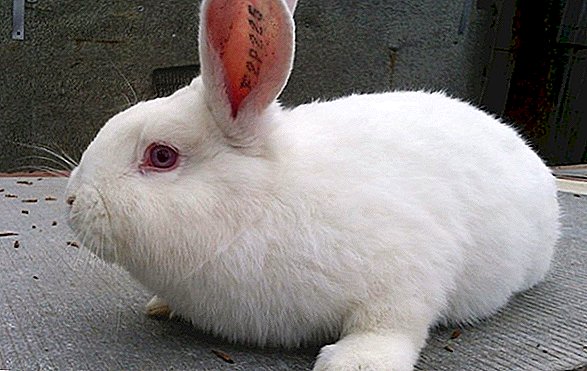
- Red New Zealand. The length of the body in adult females and males reaches 48-50 cm, weight - 4.5 kg. The main plus of the breed is accelerated growth: the process of slaughtering rabbits can begin as early as 2-2.5 months. Of the minuses should be highlighted - low stress resistance, intolerance to bright light and drafts.

- French ram. Representatives of the breed can gain up to 12 kg of weight and bring large offspring - 8-9 rabbits. Due to the peculiarities of the structure of their paws, the content should be carried out in special mesh cells.
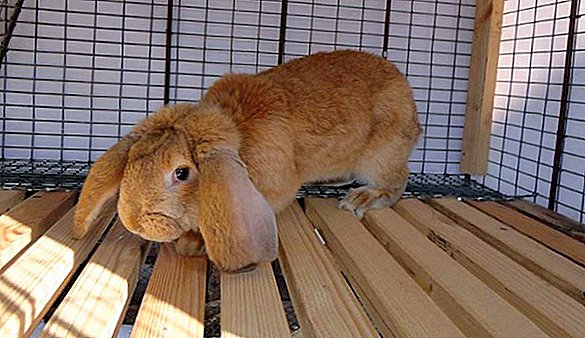
- Flandre. The main differences are a big head with lush cheeks and long ears (about 10 cm). Rabbit colors: black, dark gray, red, sand, blue and opal. The animals are very unpretentious in the care, but because of the characteristics of the legs are not recommended to keep them in the mesh cells.

On the skins
Rabbits, which are bred on the skins, are also called long-haired. The down collected from them has the same value as sheep and goat.
Common breeds:
- Angora down rabbit It has a short body with a small mass (2.5-3 kg). The body of these animals is covered with a thick silky pile, reaching 22 cm. It is not easy to keep Angora rabbits - they need to create certain conditions concerning both the cage and the food.

- White down rabbit widely distributed among Russian farmers. The body is of medium length (45-50 cm), rounded. In just 1 year, the animal is able to bring from 300 to 800 g of valuable fluff.

Important! A thick pile of white down rabbit requires daily gentle combing. Too large lumps or mats should be cut with scissors, but not pulled out so as not to cause animal injury.
Meat-hide (universal) breeds are more expensive because they provide the farmer with meat and wool:
- Soviet chinchilla.
- White giant.
- Gray giant.
- Silver.
- Russian ermine.
- Black brown
- Viennese blue.
The right choice of healthy rabbits
It is necessary to acquire rabbit young from trusted producers who have positive reviews available.  When buying, it is important to monitor whether such signs are present:
When buying, it is important to monitor whether such signs are present:
- activity and mobility of baby rabbits;
- moderate fatness;
- strong body;
- clear eyes, without any discharge;
- clean ears inside and out;
- straight front paws;
- rabbit nose must be dry;
- no traces of mucus on the face;
- clean anus - dirty marks are one hundred percent indicator of any disease of the gastrointestinal tract;
- shiny, tight-fitting wool.
Important! Buy rabbits is best in 2-3 months after their birth. Young animals weaned off too soon (up to 1-1.5 months) almost always have weakened immunity and low productivity.
Signs indicating a categorical marriage in any breed:
- sagging belly;
- curve ridge;
- ruffled down coat;
- elongated head;
- prominent hip joints;
- drooping ears.
Equipment for rabbits in the country
Most often, farmers independently make or purchase a special cellular battery, and then equip a "dwelling" based on the characteristics of the selected breed of rabbits and the dacha plot. 
Optimal cell parameters
It is desirable that the whole frame of the cell battery is 6.5 m long and 0.5 m wide. The height of the front wall is 1.8 m, the back one is 1.6 m. The prepared cells should be placed on a battery in 3 tiers:
- 1 tier - 30 cm from the ground;
- 2 tier - 50 cm from the level of the first tier;
- 3 tier - 50 cm from the second level.
Learn how to make a cage for rabbits, a shed, a barn, a cottage, a water bowl, a feeding trough and a sennik.
Subject to all recommendations for the manufacture, acquisition and installation of cells, the farmer should get a common, convenient for rabbit maintenance design with optimal dimensions:
- for young stock - 50x70x30 cm;
- for adults - 50x100x30 cm.

Conditions of detention
Before settling animals, the rabbit "dwelling" must be properly placed and well prepared:
- it is recommended to install the cage with the front side facing east and the back side towards the west; thus, the livestock will be protected from the constant negative effects of the direct sun;
- the optimum temperature in the room with cells should be from 15 to 18 ° C;
- air humidity should not exceed 65% - a significant increase in air or, on the contrary, excessive dryness in animals causes various infectious diseases leading to the death of livestock;
- In order to avoid drafts that provoke outbreaks of infection in rabbits, the cell battery is installed in a protected corner space.
Important! Rabbits very poorly tolerate high temperature air. Only 2-3 hours of the animals being heated to 28° With the room enough for a serious heat stroke.
What to feed rabbits
Competently composed, balanced diet is the main guarantee of health for rabbits of different ages. In general, the general menu consists of:
- green food (tops from root crops, peas, rhubarb, celery, horseradish, dandelion, colza, sow thistle, nettle, chicory, yarrow);
- rough feeds (birch, poplar, hornbeam, cornel, willow and other branches, hay, pine and juniper needles);
- succulent fodder (sugar and fodder beet, carrot, potato, pumpkin, Jerusalem artichoke, zucchini, watermelon fodder and cabbage);
- concentrated feed: (cereals, animal feed, protein waste).
 In drawing up the diet, it is important to bear in mind that the schemes for summer and winter feeding have some distinctive subtleties.
In drawing up the diet, it is important to bear in mind that the schemes for summer and winter feeding have some distinctive subtleties.Summer
In the summer season, the menu of rabbits is saturated with a large number of juicy and green food, consisting of freshly cut grass, twigs, root crops and vegetables. For each group of individuals (rabbits, feeding rabbits, etc.), the daily dosage is calculated individually.
Rabbit for fattening:
- herbs - 700 g;
- concentrated feed - 70 g.
Males in mating:
- herbs - 800 g;
- conc. feed - 30 g
Nursing bunnies:
- herbs - 1200 g;
- conc. feed - 70 g
Rabbits from 1 to 4 months:
- herbs - 500 g;
- conc. feed - 45 g
Important! If the diet includes a large number of branches and succulent fodder, then the issue of grass should be reduced by half. Before feeding, the grass must first be podvilit.
Dangerous for the health of animals grass and tree branches:
- horse dill;
- digitalis;
- wild radish;
- buttercups;
- wolf lyk;
- elder;
- bird cherry;
- wild rosemary;
- apricot.

In winter
In winter, rabbit food should contribute to weight gain and perform the function of heating, for this, more coarse and concentrated feeds are included in daily feeding. Approximate menu:
Feeding individuals:
- hay - 150 g;
- root vegetables - 500 g;
- conc. food - 80 g
Males in mating:
- coarse feed - 150 g;
- root vegetables - 200 g;
- conc. food - 55 g
Nursing females:
- rough food - 200 g;
- root vegetables - 400 g;
- conc. feed - 90 g
Rabbits from 1 to 4 months
- roughage - 100 g;
- root vegetables - 300 g;
- conc. food - 55 g

How to care for rabbits in the village
To achieve maximum life comfort and eliminate any infectious threats, regular and thorough cleaning should be carried out in rabbit cages. She suggests:
- daily cell cleaning;
- timely replacement of litter;
- disinfection (about two times a month).
Read also about how to breed rabbits at home.
Cleaning and disinfection of housing, equipment
Cage cleaning consists of cleaning droppings, dirt, debris and litter residues. To manipulate the farmer will need gloves, a small broom with a dustpan and a damp cloth. Especially thorough cleaning is required before the disinfection procedure - the walls, floor, ceiling of the rabbit housing should be washed and smooth to the touch. 
Disinfection is carried out using a special dispenser and effective commercial preparations:
- Ecocide C;
- Bromosept;
- Virocid;
- 5% iodine solution.
Or proven over the years folk remedies:
- burnt lime;
- hot lye treatment, whiteness solution;
- burning with fire.
Do not forget about vaccination
Unfortunately, rabbit epidemics of various infectious origins occur regularly, which can deprive newcomers of the desire to continue the work begun. Unpleasant symptoms in animals can occur suddenly, even in the most well-groomed and seemingly healthy individuals.  In order to prevent any disease as much as possible, it is recommended to vaccinate home rabbits according to a special schedule after reaching 1.5 months of age:
In order to prevent any disease as much as possible, it is recommended to vaccinate home rabbits according to a special schedule after reaching 1.5 months of age:
- 1 vaccination - Rabbiwak B - one month after birth, against viral myxomatosis. The second vaccination is done in a month, the third - in six months. Subsequently, 2 times a year, in spring and autumn;
- 2 vaccination - 1.5-2 months (weight about 500 g) against hemorrhagic disease (UHD). The next dose is administered after three months. In the future, the vaccine is repeated every 9 months;
- 3 vaccination - for rabies (the drug is used in common, for all pets). The first vaccination is done 2.5 months after birth, and later on once a year.
Did you know? If the rabbits were allowed to reproduce as freely as possible, without any limiting factors, after 90 years, there would be a rabbit for every square meter of land.
So, breeding rabbits in their own summer cottage under the force of any person. The main thing is to organize the right conditions for animals, to create a balanced diet, and also to vaccinate in time. With proper diligence, positive results will not keep you waiting.








